Do you have a question about the Samsung HT-BD8200 and is the answer not in the manual?
Describes the player's capabilities, supported media formats, and advanced audio decoding.
Details Blu-ray disc capabilities, video highlights, and online services like BD-LIVE.
Lists all the accessories supplied with the product for setup and operation.
General safety precautions and warnings to prevent electrical shock and fire hazards.
Additional safety advice regarding placement, moisture, heat, and ventilation.
Explains manual usage, icons, and references to safety information.
Lists playable disc types, formats, and logos supported by the player.
Lists incompatible disc types and explains region code restrictions for playback.
Detailed explanation of supported disc types like BD-ROM, DVD-Video, and Audio CD.
Details supported formats for MP3, JPEG, and DVD-RW/-R discs.
Describes the front panel controls, buttons, and indicators.
Details the rear panel connections and ports for external devices.
Identifies buttons and functions on the remote control for operating the unit.
Instructions for properly installing batteries into the remote control.
Instructions for programming the remote to control a TV.
A list of codes for controlling various TV brands with the remote.
Steps to wirelessly link the subwoofer to the main unit for audio output.
Instructions for installing the unit using the cradle stand on a shelf.
Instructions for mounting the unit securely on a wall.
Guides for connecting the unit to a TV via HDMI or composite video.
Steps for connecting an iPod to play music and videos through the unit.
How to connect audio from external devices via optical or analog inputs.
Guides for connecting the unit to a network via LAN cable or wireless adapter.
Instructions for connecting the FM antenna for radio reception.
Initial setup steps before playing discs, including language selection.
Step-by-step guide on how to insert and play discs, including resume function.
How to adjust audio settings like power on/off melody sound.
How to quickly navigate through chapters or tracks during playback.
Using slow motion and step motion playback features for detailed viewing.
Instructions for setting the time zone and the unit's clock.
How to set audio, subtitle, disc menu, and player menu languages.
Guides for configuring speaker settings like distance and sound edit.
Explanation of the dynamic compression feature for audio intelligibility.
How to adjust audio delay for synchronization with video.
Using test tone to check speaker connections and audio output.
Overview of TV screen settings and aspect ratio adjustments.
How to adjust the aspect ratio of the picture for different TVs.
Adjusting HDMI output to 24 frames per second for improved movie quality.
Setting the output resolution for HDMI and composite video signals.
Improving picture quality for DVD discs by setting progressive mode.
General HDMI configuration options including Anynet+, Format, and BD Wise.
Linked operation with Samsung TVs using HDMI for simplified control.
Setting the HDMI output format for TV or monitor connections.
Samsung's inter-connectivity feature for optimal resolution settings.
Configuring HDMI audio output to TV speakers or the home theater.
Instructions for enabling and configuring parental controls on discs.
Steps to reset the parental lock password if it is forgotten.
Defining content rating limits for parental control to restrict playback.
General network configuration steps for internet connectivity.
Choosing between wired (Cable) and wireless network connections.
Configuring wired network settings like DHCP, IP Address, and DNS.
Configuring wireless network settings, including access point selection and security.
Configuring proxy server settings if required by your Internet Service Provider.
Setting the unit's time automatically from an internet NTP server.
Verifying network connectivity status and troubleshooting.
Configuring access for BD-LIVE interactive content via network.
Managing user data stored on USB devices, including deletion.
Instructions for updating the unit's firmware via network or USB.
Checking current firmware version and detailed system information.
Registering for DivX Video On Demand services.
Deactivating DivX registration from the device.
Displaying information about the current movie, such as title, chapter, and audio.
Navigating menus on Blu-ray/DVD discs for content selection.
Repeating current chapter or title playback for continuous viewing.
Changing the audio track language for the movie.
Changing the subtitle language for the movie.
Selecting different camera angles available on discs for varied viewing.
Using the picture-in-picture feature for additional content viewing.
Accessing interactive content and features via BD-LIVE.
Playing various media file formats like DivX, MKV, and MP4.
Information about the DivX format and its supported video/audio features.
Remote functions for playing audio CDs and MP3 discs.
Repeat modes for audio discs, including track, folder, and random.
How to play audio CDs and MP3 files from discs or USB.
Creating and managing music playlists for playback.
Playing music and viewing photos concurrently from a storage device.
How to view JPEG image files from a disc or USB device.
Adjusting slideshow playback speed and settings for image viewing.
Rotating images displayed on screen for proper orientation.
Zooming in and out of images for closer inspection.
Navigating to the list of available photos for selection.
Playing files like music and pictures from USB storage devices.
Proper procedure for disconnecting USB devices to prevent data loss.
Navigating files on a connected USB device during playback.
Technical details of USB host compatibility and supported devices.
List of supported file types and their specifications for USB playback.
How to tune into and listen to FM radio stations using the unit.
Selecting mono or stereo audio output for radio reception.
Saving favorite radio stations for quick access.
Playing music files from an iPod connected via the dock.
Browsing music by artist, album, genre, and other categories.
Playing video files stored on an iPod through the unit.
Streaming media files from a PC to the Blu-ray Home Theater.
Methods for finding and accessing shared folders on a PC.
Manual setup for PC streaming connection, including IP address and credentials.
Accessing Blockbuster movies and TV shows via the internet service.
Accessing Netflix streaming service for movies and TV shows.
Accessing Pandora internet radio for personalized music.
Accessing YouTube videos and managing account settings.
Managing favorite YouTube videos and saving them for later viewing.
Managing videos saved in the Player Library without logging into YouTube.
Setting the unit to automatically shut off after a specified time.
Adjusting the brightness of the main unit's front display.
Temporarily silencing audio output, useful for calls or interruptions.
Common issues encountered and their corresponding troubleshooting steps.
Guidelines for proper disc care, handling, and storage to maintain quality.
Technical details and performance metrics of the Blu-ray Home Theater unit.
Terms and conditions of the product warranty, including coverage and limitations.
| RMS rated power | 300 W |
|---|---|
| Audio output channels | 2.1 channels |
| Audio formats supported | MP3 |
| Weight | 13400 g |
| Audio system | Dolby True HD, Dolby Digital Plus, DTS-HD |
| Dimensions (WxDxH) | 1000 x 116.5 x 196 mm |
| Optical disc player type | DVD player |
| Video formats supported | H.264, MPEG2, VC-1 |
| Disc types supported | DVD |
| USB version | 2.0 |

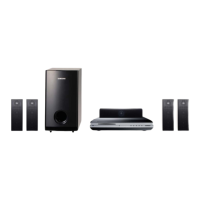


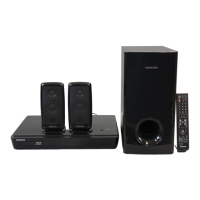

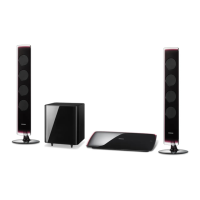
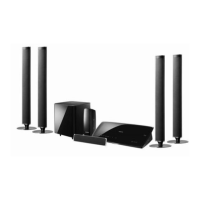
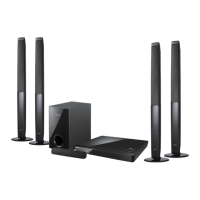
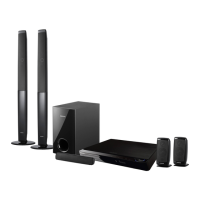

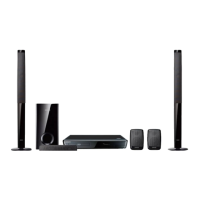
